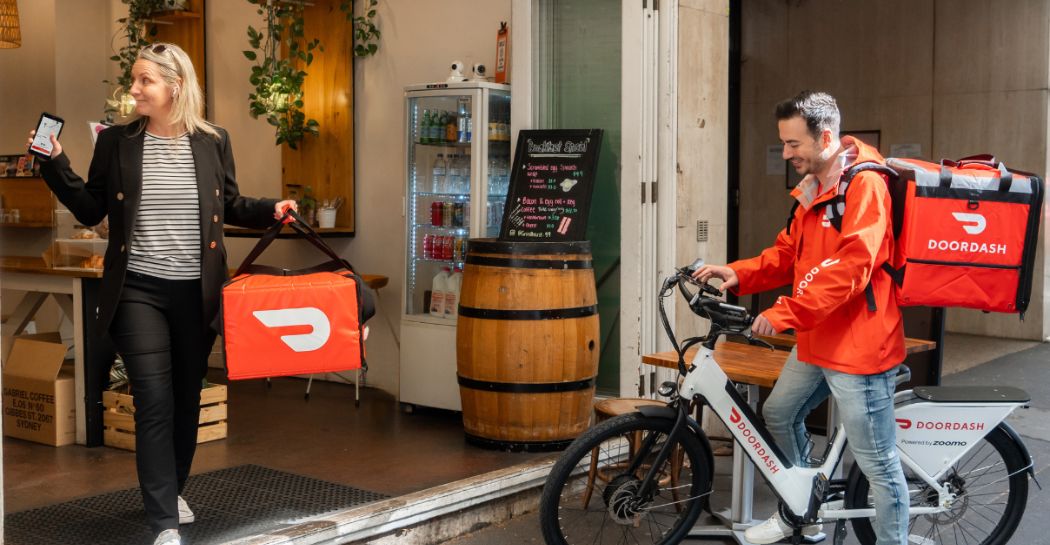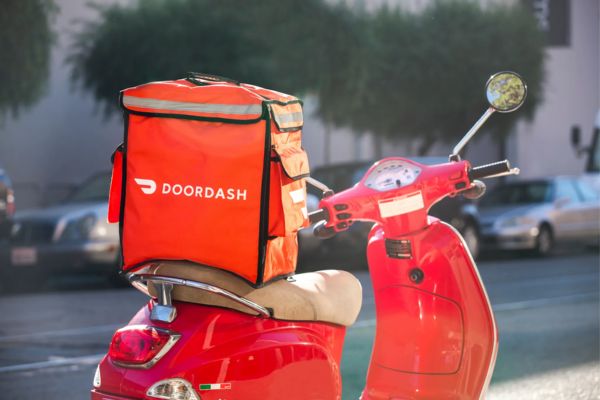Food delivery has become an integral part of our daily lives, and among the plethora of services available, DoorDash stands out as a leader. From its humble beginnings to its current status as a household name, DoorDash has transformed the way we think about and experience food delivery. In this blog, we’ll delve into the history, impact, and future of DoorDash, examining how it has revolutionized the food delivery landscape.
1. The Birth of DoorDash: A Silicon Valley Story
DoorDash was founded in June 2013 by Stanford students Tony Xu, Stanley Tang, Andy Fang, and Evan Moore. The idea was born out of the need to solve a simple problem: how to help small businesses, especially restaurants, reach more customers without the financial burden of building their own delivery infrastructure. The co-founders began by personally delivering food around Palo Alto, California, testing their concept and refining the logistics.
Their vision was clear: create a platform that connects customers with their favorite local restaurants through a seamless delivery experience. With initial funding and support from Y Combinator, a prestigious startup accelerator, DoorDash began its journey towards becoming a major player in the food delivery market.
2. Expansion and Growth: From Local to National
After its successful launch in Palo Alto, DoorDash rapidly expanded to other cities. The company focused on building relationships with local restaurants, emphasizing the importance of supporting small businesses. By 2015, DoorDash had extended its services to major metropolitan areas across the United States, including San Francisco, Los Angeles, and New York City.
One of the key factors in DoorDash’s growth was its commitment to technology. The company invested heavily in developing a robust logistics platform that could handle the complexities of food delivery, from order placement to real-time tracking and efficient routing for delivery drivers. This technological edge allowed DoorDash to scale quickly and efficiently.
3. The DoorDash Experience: Convenience at Your Fingertips
DoorDash has transformed the food delivery experience for both customers and restaurants. For customers, the process is simple and intuitive. Users can browse through a wide selection of restaurants on the DoorDash app or website, place their order, and track the delivery in real-time. The platform offers various features such as scheduled deliveries, contactless delivery options, and the ability to customize orders.
For restaurants, DoorDash provides a valuable service that extends their reach to a broader customer base. By partnering with DoorDash, restaurants can focus on preparing delicious meals while leaving the logistics of delivery to the experts. This partnership model has been particularly beneficial for small and independent restaurants, which often lack the resources to manage their own delivery services.
4. DoorDash and the Gig Economy: A New Way to Work
At the heart of DoorDash’s delivery system are the “Dashers,” the independent contractors who deliver food to customers. Dashers have the flexibility to choose when and where they work, making it an attractive option for those seeking part-time or supplementary income. The gig economy model has been a cornerstone of DoorDash’s operational strategy, allowing the company to quickly scale its delivery network.
However, this model has not been without controversy. There have been debates about the classification of Dashers as independent contractors versus employees, with implications for benefits, job security, and earnings. DoorDash has made efforts to address these concerns, implementing programs like DasherDirect, which offers Dashers access to earnings and discounts on gas, and the Dasher Community Council, which provides a platform for Dashers to voice their concerns and provide feedback.
5. Impact on the Restaurant Industry: Challenges and Opportunities
DoorDash’s rise has had a significant impact on the restaurant industry. For many restaurants, especially during the COVID-19 pandemic, delivery services became a lifeline. DoorDash and similar platforms provided a critical revenue stream when in-person dining was not possible. The convenience and reach of DoorDash allowed restaurants to continue serving their customers and even attract new ones.
However, there are challenges as well. Some restaurant owners have raised concerns about the commission fees charged by DoorDash, which can range from 15% to 30% of the order total. These fees can eat into the already thin margins of restaurants. In response, DoorDash has introduced initiatives such as reduced commission rates for small businesses and marketing programs to help restaurants increase their visibility on the platform.
6. DoorDash Beyond Food: Expanding Horizons
While food delivery remains the core of DoorDash’s business, the company has been exploring new opportunities to diversify its offerings. In recent years, DoorDash has ventured into grocery delivery, partnering with major chains like Walmart and Safeway. This move capitalizes on the growing demand for convenience in grocery shopping, particularly in urban areas.
Additionally, DoorDash has introduced DashMart, a convenience store delivery service that offers a wide range of products, from household essentials to snacks and beverages. By expanding beyond restaurant delivery, DoorDash aims to become a comprehensive platform for on-demand delivery services, meeting various consumer needs.
7. The Future of DoorDash: Innovation and Expansion
As DoorDash looks to the future, innovation and expansion remain at the forefront of its strategy. The company continues to invest in technology to improve the efficiency and reliability of its delivery network. Initiatives like autonomous delivery robots and drone deliveries are being explored to further streamline the delivery process and reduce costs.
International expansion is also a key focus for DoorDash. While the company has established a strong presence in the United States and Canada, it has begun to enter new markets such as Australia and Japan. This global expansion presents both opportunities and challenges, as DoorDash must adapt to different regulatory environments and consumer preferences.
In conclusion, DoorDash has revolutionized the food delivery industry with its innovative approach and commitment to convenience. From its Silicon Valley origins to its current status as a leader in on-demand delivery, DoorDash continues to shape the way we think about and experience food delivery. As the company looks to the future, it remains poised to explore new frontiers and redefine the possibilities of on-demand services.




